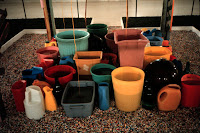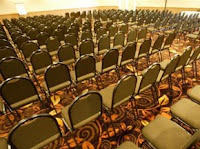Chuck Phillips, a change management consultant for major institutions and corporations in the USA, was a lively speaker during our recent meeting on Deep Change Processes. He started his presentation with an activity that some people likened to strip poker…
Two people face each other and take an “inventory” of the other person. Look them up and down and notice everything you can about their appearance.
Now, turn your backs to one another and listen. An important client of yours tells you that to keep up with the market, your company needs to change its appearance, and asks you to change five things about your appearance before you turn back to your partner. What do you change? Most people took off their glasses, they took off their watches, their earrings and rings, rolled up their sleeves, and unbuttoned their shirt. When they turned back to their partners, each had to guess what 5 things had changed.
Now, turn your backs to one another again, and listen. This client tells you that the market is extremely tight, and more serious changes need to happen. In order to keep up with the competition, you need to change 5 more things about your appearance. People complain. They struggle to think of what they can change. They take off their shoes (that’s two), they take off a sock (one more), they stop and think – what more can I take off? “Hey, this is like strip poker”, someone shouts to nervous laughter. Now what? Fold up one trouser leg, stick up your collar (that’s five). We turn around again and try to guess the five things that have changed.
Now turn your backs AGAIN and listen…We’re going to go out of business in this current cutthroat business climate, your client says, unless you can change 8 more things about your appearance. Rioting ensues, well almost, as people cannot even imagine what more they could take off, take away, shorten. Then it starts to occur to people – can we change our smile, can we put things on – that sweater, that guy’s hat? Can we sit down or stand up? Yes to all of those!
What is it about change that makes people assume that they need to lose something, cut something, or take something away? Does it have to be like that? How can we get people to see change as an opportunity to add things, to change the way we see the world (sit down, turn around), to get some ideas from other people (what is that guy changing, hey, good idea), or swap things with someone else so we both look different?
As I sat in a different meeting today and heard about budget changes and saw the subsequent taking away – of positions, of projects, of offices – I asked myself what do change and strip poker have in common? And does it need to be like that?






